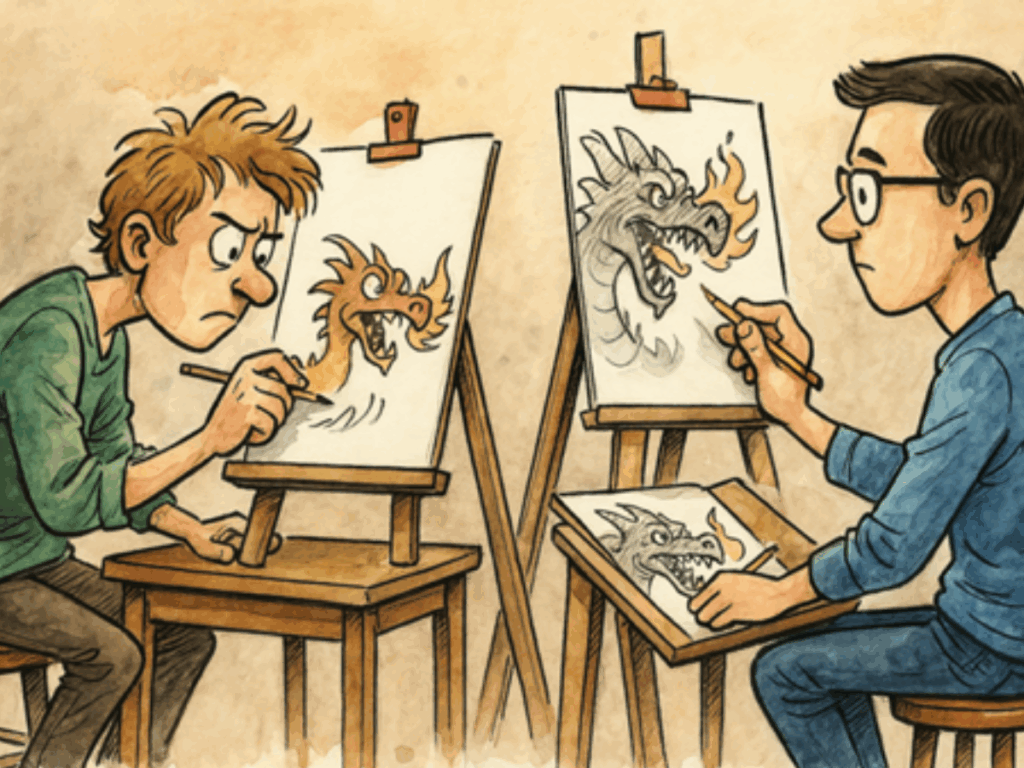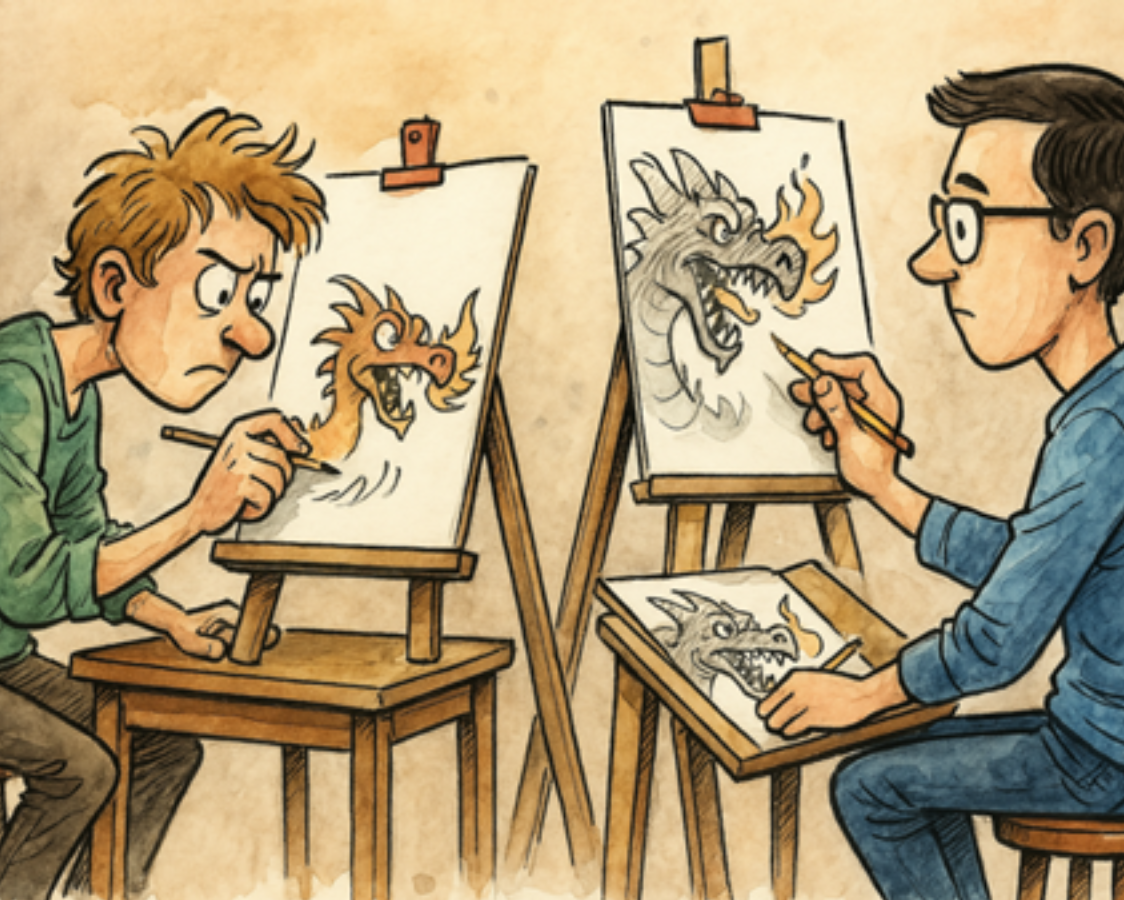In the ever-evolving world of design, ideas flow like rivers—constantly moving, merging, and shaping one another. As designers, we are exposed to countless works of art, patterns, and concepts that ignite our creativity. We scroll through design platforms, walk past architectural marvels, admire typography on billboards, and witness the subtle artistry hidden in everyday objects. Every detail around us has the potential to become a spark. But here’s the delicate question: when does inspiration transform into imitation?

This question is not just philosophical—it’s deeply practical. For young designers just stepping into the field, the temptation to mirror admired works can feel strong, like holding onto a safety net. For seasoned professionals, the challenge is to keep refreshing their creative voice without unintentionally replicating what has already been done. The balance is fragile, yet essential. Because design, at its core, isn’t just about making things beautiful—it’s about telling stories, solving problems, and leaving behind a trace of our unique perspective.
The Beauty of Inspiration
Inspiration is the heartbeat of creativity. It is the gentle spark that pushes us to dream bigger, think differently, and express our voice in new ways. Whether it’s the curve of a vintage chair, the color palette of a sunset, or the elegance of a centuries-old temple, inspiration allows us to connect with the world’s beauty and reinterpret it in our own unique style. It is a dialogue between the past, the present, and the future.
When we draw from inspiration, we are not copying—we are conversing. We listen, we learn, and then we speak back through our designs, adding our perspective to the greater conversation of art. In this way, inspiration becomes a bridge: between cultures, between generations, and between different ways of seeing the world.
The Trap of Imitation
Imitation, however, takes a different path. It occurs when the voice of originality is lost, and we simply mirror what already exists. While imitation may sometimes feel like flattery, in design it risks diminishing the authenticity of our work. Instead of expressing ourselves, we become echoes of others. And in a world hungry for fresh ideas, echoes fade quickly.
That said, imitation is often a stepping stone for beginners—it teaches technique, structure, and form. Many great designers began by replicating works they admired, just as painters once trained by studying the masters. But staying too long in its shadow prevents growth. True design thrives when we take those learned skills and shape them into something deeply personal.
Fact: In a survey by Adobe, 64% of creative professionals agreed that drawing inspiration from others is vital, but originality is what makes a design memorable.
Where to Draw the Line
So how do we distinguish inspiration from imitation? The line often lies in intent and transformation:
- Intent: Are you borrowing an idea to understand it, or to pass it as your own?
- Transformation: Does the source remain visible in your final piece, or have you reimagined it into something new?
A good rule of thumb is this: if your design tells your story—even if sparked by another’s—it’s inspiration. If it only tells someone else’s story, it leans into imitation.
Practical Ways to Stay Inspired Without Duplicating
- Mood Boards: Collect images, textures, and palettes that excite you, then blend them into something that feels fresh.
- Cross-Discipline Exploration: Look for inspiration outside your field. A musician, a dancer, or even nature itself can spark a design idea that feels uniquely yours.
- Ask “Why?” Not Just “What?”: Instead of copying what you see, try to understand why it works—what emotions it evokes, what principles it uses—and reinterpret those insights in your own language.
- Reflect Your Story: Your culture, experiences, and memories are irreplaceable sources of authenticity. Lean into them.
“The only way to do great work is to love what you do.” – Steve Jobs.
Celebrating Authenticity
Design is a journey of self-expression. By embracing inspiration, we honor those who came before us while carving our own path. The world doesn’t need replicas; it needs voices—honest, bold, and authentic.
Authenticity in design doesn’t mean creating in isolation. It means standing on the shoulders of giants with gratitude, then daring to stretch your own wings. It means weaving threads of tradition with strands of your imagination to form something entirely new.
So the next time you find yourself captivated by a design, ask yourself: How can I honor this idea while making it truly my own? In doing so, you’ll not only respect the work of others but also nurture your unique creative identity.
Final Thought:
Inspiration is the seed, but authenticity is the flower. One borrows from the soil of the past, while the other blooms into the future. As designers, let’s plant with care and grow with honesty. And in that growth, may we create designs that not only reflect our individuality but also leave behind a legacy for others to be inspired by.
Remember, every choice you make in your design—be it a curve, a shade, or a word—carries a piece of your identity. Let that identity shine through boldly, even when guided by inspiration. True creativity is not about reinventing the wheel, but about steering it in a direction only you can imagine.
And perhaps that is the truest joy of design—it allows us to craft more than just visuals. It lets us build bridges, evoke emotions, and whisper stories that may outlive us. When inspiration becomes personal, it transforms into a gift to the world, one that is timeless in its own quiet way.
So nurture your vision, honor your influences, but always remember: your voice matters. Let it echo with strength, tenderness, and originality.
“Styles come and go. Good design is a language, not a style.” – Massimo Vignelli.



